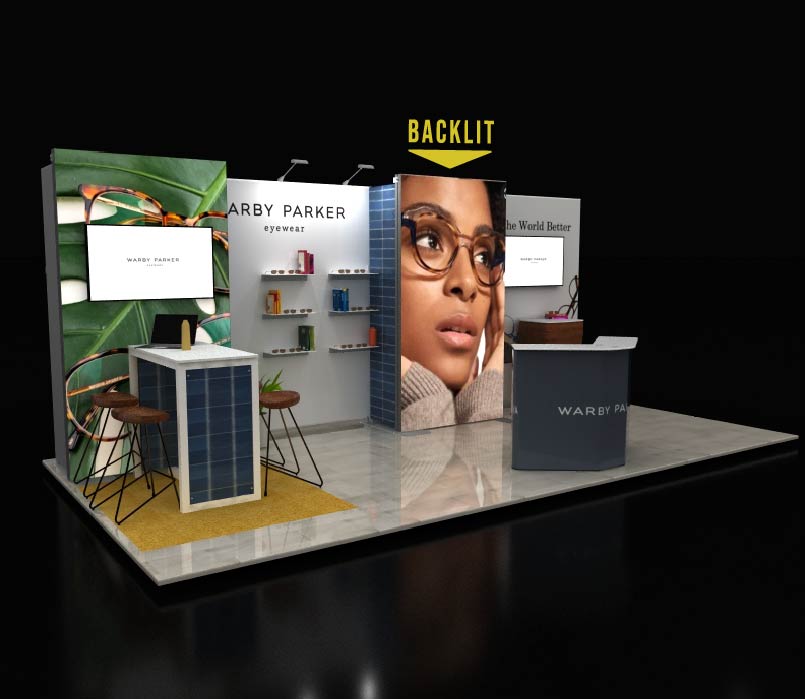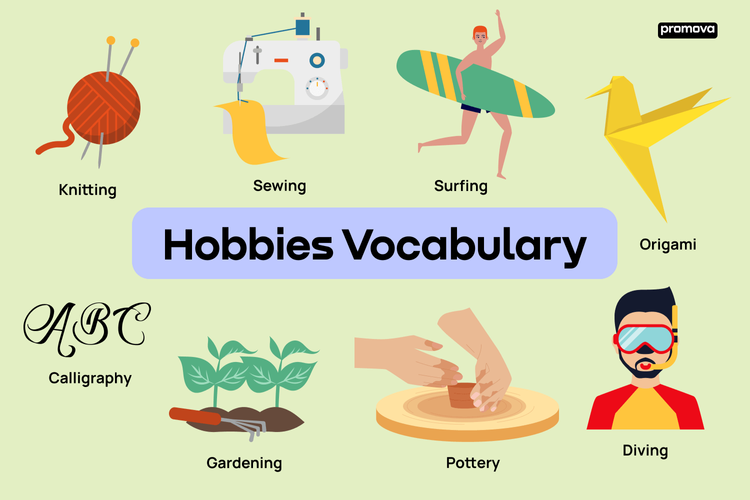Trade shows provide an excellent opportunity for businesses to showcase their products and services to a large audience. To make a lasting impression on potential customers, it is important to have a well-designed trade show display. In this article, we will provide a comprehensive guide on trade show displays for exhibitors, including everything from planning to execution.
Table of Contents
1. Introduction
Trade show displays are an essential element of any trade show or exhibition. The display represents your brand and is often the first impression potential customers have of your business. Trade show displays can be simple or elaborate, depending on your budget and goals for the event. In this article, we will discuss the different types of trade show displays, planning for a trade show display, designing a trade show display, and much more.
2. Types of Trade Show Displays
There are many different types of trade show displays to choose from. Here are some of the most popular:
Pop-Up Displays
Pop-up displays are the most common type of trade show display. They are lightweight, easy to set up, and affordable. They consist of a collapsible frame that holds a fabric or vinyl graphic. Pop-up displays come in various sizes, from tabletop to full-size displays.
Banner Stands
Banner stands are portable and easy to set up. They consist of a retractable banner that is held up by a stand. Banner stands come in various sizes and shapes, from tabletop to floor-standing.
Modular Displays
Modular displays are customizable and can be configured in various ways to suit your needs. They consist of multiple pieces that can be rearranged to create different layouts. Modular displays are more expensive than pop-up displays and banner stands, but they offer more flexibility and a more professional look.
Tabletop Displays
Tabletop displays are smaller displays that can be placed on a table or counter. They are perfect for smaller events or when space is limited. Tabletop displays can consist of a pop-up display or banner stand.
3. Planning for a Trade Show Display
Before you start designing your trade show display, it is essential to plan your goals and budget. Consider the following questions:
- What are your goals for the event? Do you want to generate leads, increase brand awareness, or launch a new product?
- What is your budget for the event? How much can you allocate for your trade show display?
- What is the size of your booth space? What are the dimensions of the space you will be allotted?
Once you have answers to these questions, you can start planning the design of your trade show display.
4. Designing a Trade Show Display
Designing a trade show display requires careful consideration of your branding, messaging, and target audience. Your display should reflect your brand identity and be visually appealing. Here are some tips for designing a trade show display:
- Keep your messaging simple and clear
- Use high-quality graphics and images
- Use contrasting colors to make your display stand out
- Make sure your display is easy to read from a distance
- Use your logo prominently in your display
- Include a call to action to encourage visitors to take action
- Use lighting to highlight key elements of your display
- Consider using multimedia elements, such as videos or interactive displays, to engage visitors
Remember to stay within your budget when designing your display. While you want it to be visually appealing, it should not break the bank.
5. Choosing the Right Materials for Your Trade Show Display
Choosing the right materials for your trade show display is crucial. The materials you choose will impact the durability and portability of your display. Here are some common materials used in trade show displays:
- Fabric: Fabric displays are lightweight and easy to transport. They can be printed with high-quality graphics and are ideal for pop-up displays.
- Vinyl: Vinyl displays are durable and weather-resistant. They are often used for outdoor events or in high-traffic areas.
- Cardboard: Cardboard displays are inexpensive and eco-friendly. They are ideal for short-term use and can be recycled after the event.
- Aluminum: Aluminum displays are durable and lightweight. They are ideal for modular displays and can be easily customized.
Consider the pros and cons of each material before making your decision.
6. Setting Up Your Trade Show Display
Setting up your trade show display can be a stressful experience. It is important to arrive early and give yourself plenty of time to set up. Here are some tips for setting up your display:
- Bring a toolkit with everything you need to assemble your display
- Practice setting up your display before the event
- Follow the instructions carefully
- Double-check that everything is in working order
Remember to be mindful of your neighbors when setting up your display. Be respectful of their space and do not obstruct their view.
7. Attracting Visitors to Your Trade Show Display
Attracting visitors to your trade show display is essential to the success of your event. Here are some tips for attracting visitors:
- Use eye-catching graphics and messaging
- Offer a giveaway or contest
- Use interactive elements, such as touch screens or games
- Host a demonstration or presentation
- Use social media to promote your event and booth
Remember to be engaging and personable when speaking with visitors. Smile, make eye contact, and ask open-ended questions to start a conversation.
8. Engaging with Visitors at Your Trade Show Display
Engaging with visitors at your trade show display is critical. It is an opportunity to build relationships and generate leads. Here are some tips for engaging with visitors:
- Listen to their needs and interests
- Be knowledgeable about your products and services
- Be personable and approachable
- Offer solutions to their problems
- Follow up with them after the event
Remember to collect contact information from visitors to follow up with them after the event. Use a lead capture form or a tablet to collect information quickly and efficiently.
9. Collecting Leads and Follow-Up
Collecting leads and following up after the event is essential to maximizing the return on your investment. Here are some tips for collecting leads and following up:
- Use a lead capture form or a tablet to collect contact information
- Segment your leads based on their interests and needs
- Follow up with them within 24-48 hours after the event
- Provide them with valuable information or a special offer
Remember to personalize your follow-up communication and offer value to your leads. This will help build a relationship with them and increase the chances of conversion.
10. Evaluating the Success of Your Trade Show Display
Evaluating the success of your trade show display is critical to improving future events. Here are some metrics to consider:
- Number of visitors to your booth
- Number of leads collected
- Conversion rate of leads
11. Common Mistakes to Avoid
There are several common mistakes that exhibitors make when designing their trade show displays. Here are a few to avoid:
- Overcrowding your booth: Your display should be visually appealing, but it should also be easy to navigate. Don’t clutter your booth with too many elements or text.
- Poor branding: Make sure your branding is consistent and prominent throughout your display. Your logo should be visible and your messaging should be clear and concise.
- Lack of engagement: Your booth should be staffed by engaging, knowledgeable people who can answer questions and build relationships with visitors.
- Poor lighting: Lighting is a crucial element of your display. Make sure your booth is well-lit, especially if you are showcasing products or graphics.
- Neglecting follow-up: Collecting leads is just the first step. Make sure you follow up with leads in a timely manner to maximize your return on investment.
12. Trade Show Display Trends
Trade show display trends are constantly evolving. Here are a few current trends to consider when designing your display:
- Sustainability: Many exhibitors are looking for eco-friendly materials and displays to reduce their environmental impact.
- Digital elements: Interactive elements, such as touch screens, virtual reality, and augmented reality, are becoming more popular in trade show displays.
- Personalization: Customized displays that reflect the exhibitor’s brand and personality are becoming more common.
- Social media integration: Many exhibitors are using social media to promote their events and engage with visitors before, during, and after the event.
Consider incorporating these trends into your display to make it stand out and attract visitors.
13. Trade Show Display Budgeting
Trade show displays can be expensive, so it’s important to budget carefully. Here are some expenses to consider:
- Booth rental: This is usually the largest expense. Make sure you understand the fees and restrictions associated with your booth rental.
- Display design and production: This includes graphics, materials, and labor costs associated with creating your display.
- Travel and lodging: If you are traveling to the event, you’ll need to budget for transportation and lodging.
- Marketing and promotions: This includes advertising, giveaways, and other promotional materials to attract visitors to your booth.
- Staffing: You’ll need to pay your staff to work the event, as well as cover their expenses such as meals and transportation.
Consider all of these expenses when budgeting for your trade show display.
Conclusion
Trade shows are a valuable opportunity to showcase your products and services, build relationships with potential customers, and generate leads. By designing an effective trade show display and engaging with visitors, you can maximize your return on investment and achieve your business goals. Remember to stay within your budget, avoid common mistakes, and follow up with leads in a timely manner. With careful planning and execution, your trade show display can be a powerful marketing tool for your business.
FAQs
- What are some common mistakes to avoid when designing a trade show display?
- How can I attract visitors to my trade show display?
- What materials are commonly used in trade show displays?
- How do I budget for a trade show display?
- What are some current trade show display trends?






